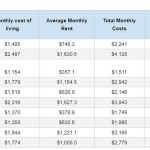In its quest for global, and galactic monopolistic domination, Amazon had focused mostly on legacy businesses with low margins which had little operational leverage, high debt and were losing market share to the online retail giant; one thing the world’s richest man refused to do was to aggressively go after his online tech giant peers.
Until now.
In its quest to expand into yet another vertical and grab a piece of the $130 billion digital advertising market dominated by Google and Facebook, Amazon will start selling video spots on its smartphone shopping app.
According to Bloomberg, Amazon has been beta testing the ads on Apple’s iOS platform for several months, with a similar product for Google’s Android platform planned for later this year. The brief video spots appear in response to search results on the shopping app, valuable space for advertisers since people searching for products on the app have a higher propensity to buy than those scrolling through Facebook or watching videos on Google’s YouTube.
With a massive user base already freely available to Amazon, the online juggernaut has emerged as a fast-growing challenger in the digital advertising market since it already captures 50% of all online sales in the US. According to EMarketer, Amazon’s digital advertising market share will grow to 8.8% this year from 6.8% in 2018, while the market-leader Google will see its share slip to 37.2 from 38.2%.
Selling more video ads opens a new high-margin, revenue opportunity for Amazon’s advertising division, which mostly sells space featuring brand logos, product photographs and descriptions that are the equivalent of digital billboards. Video ad spots are similar to television commercials and can deepen the power of promotion.
Brands will spend nearly $16 billion on mobile video advertising this year, up 22.6% from 2018, according to EMarketer. Advertisers are shifting their spending to follow the growing number of people watching videos on mobile devices and are making brief video snippets to appeal to people on the go. Such ads are common on YouTube and in Facebook streams.
Amazon’s aggressive move is surprising to some, who note that the company had for years refrained from selling advertising space on its site for fear of disrupting the shopping experience. Instead it used price, product descriptions and consumer reviews to determine which products were most prominent on the page. However, in a shift to boost profits, the site is increasingly becoming a pay-to-play platform, with the top of the page dedicated to the highest bidder, which may eventually backfire as traditionally shoppers had relied on the meritocratic-based ranking for the best offerings.
That is no longer the case.
As Bloomberg notes, Amazon began adding more product-related video content to the site two years ago to prevent shoppers from defecting to YouTube and Instagram to watch video demonstrations and testimonials from influencers not found on Amazon. Many of those video posts on other platforms feature links to sites other than Amazon where shoppers could buy products. Amazon’s lack of video content revealed a weakness in shopper engagement and product discovery other sites were doing better.
The latest mobile video ad push is a continuation of that effort to put more product videos on the platform. Amazon is requiring a $35,000 ad budget to run the spots at 5 cents per view to run the ads for 60 days, one person said. Prices can vary by category and not everyone pays a fixed rate, said another person.
Selling video advertising on smartphone apps expands a product Amazon developed for its own devices like the Fire TV streaming device and Kindle e-readers to non-Amazon devices like Apple smartphones, which more people use to shop, said Collin Colburn, analyst at Forrester Research. “They roll out these new experiences slowly to see if it disrupts the shopping experience and see if it’s something advertisers want,” he told Bloomberg.
“This creates a new format for them and another way to sell space on the platform.”
And while Amazon’s users may complain, they will have no choice but bear the gradual transformation of their favorite online retailers which becomes increasingly skewed toward pitching only the goods of those who have the deepest ad pockets. What is more interesting is how Google and Facebook will respond, now that sellers will bypass social networks and search engines and go directly to the source.












